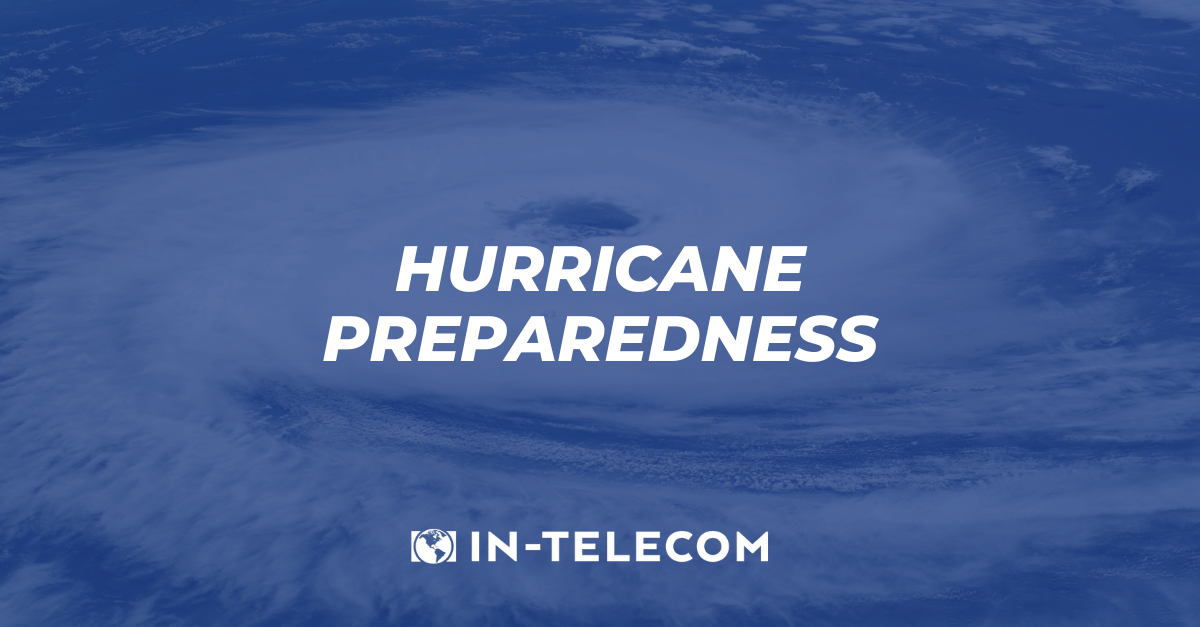
For people living in the southern United States, hurricane preparedness is very familiar. We know when hurricane season starts, and we plan to protect our homes and families should a storm make landfall. But hurricane preparedness doesn’t just apply to our homes; it also applies to our businesses.
While preparing your family and home for a hurricane can be a relatively simple task, preparing a business can be much more complicated. Proper hurricane preparation for a business requires advanced planning, ongoing communication, and a detailed roadmap for how your business will react before, during, and after a storm.
Create a Business Continuity Plan (BCP)
The first step in preparing your business for hurricane season is to create a written Business Continuity Plan (BCP). This BCP will act as your standard operating procedure, and provides detailed instructions on how your business and employees will prepare for and respond to a storm event.
- Develop a comprehensive BCP that outlines essential processes, responsibilities, and protocols to ensure business continuity before, during, and after the hurricane.
- Identify essential personnel and establish clear communication channels to keep everyone informed.
- Assign backup roles and responsibilities to ensure operations can continue smoothly when essential employees are unavailable or unreachable.
- Thoroughly review all preparation, evacuation, and safety plans with employees regularly.
- Identify critical vendors and contacts that you’ll need to be able to reach and distribute this information to essential personnel, including:
- Electrical Company
- Water Company
- Phone Company
- Internet Provider
- IT Provider
- Insurance Company
Safeguard Your IT Infrastructure
Part of your BCP needs to include protecting your critical IT infrastructure to ensure that you’ll be able to get back to business after a storm occurs with little or no interruption. These simple steps can help you prevent damage to your equipment and get you back up and running even if power can’t be restored quickly.
- Back up your data: Regularly back up all critical data and store it securely offsite or on cloud-based platforms. This will help prevent data loss in physical damage or power outages.
- Protect equipment: Safely shut down servers, computers, and networking devices before the storm hits. Relocate critical hardware to a secure, elevated location to minimize flood damage.
- Uninterruptible Power Supply (UPS): Install UPS units for essential equipment to provide temporary power during power outages and allow for safe shutdowns.
- Backup Generators: Ensure backup generators have been tested and function correctly for secondary power (if applicable).
- Secure Equipment: Secure essential equipment in air-tight bags (if possible) and place as high off the ground as possible to prevent possible water damage.
Secure Your Data
When storms come in, they carry the potential for lost power, power surges, and damaged equipment. To prevent data loss, it’s recommended that you take several steps to create backups of your crucial information.
- Data encryption: Ensure sensitive data is encrypted to prevent unauthorized access in case of equipment theft or damage.
- Cloud storage: Utilize cloud-based solutions for critical data to reduce reliance on local infrastructure.
- Test data restoration: Regularly test and verify the restoration process from backups to ensure the integrity of your data.
- Digitize Records: If time permits, digitize company records and host them in a cloud environment.
Establish Remote Access and Communication Channels
Storms are known to cause damage to communications infrastructure. When these systems go down, it can take time for them to be repaired and for services to be restored. To help prevent communication issues, we recommend having remote access and alternative communications channels in place.
- VPN Access: Set up a Virtual Private Network (VPN) to enable secure remote access to your business network.
- Cloud-based collaboration tools: Leverage cloud-based tools such as project management software, email, chat, and video conferencing platforms to maintain communication and collaboration among team members.
- Update contact lists: Ensure all employee contact information is current, including alternative contact numbers and email addresses.
- Phone/Text Messages: Set up phone trees or text message groups to quickly disseminate urgent information and instructions to employees and key contacts.
- Social Media: Utilize your company’s social media channels (e.g., Twitter, Facebook, LinkedIn) to share important updates with customers and the community. Ensure that you are following official accounts for accurate information.
Secure & Protect Your Business Locations
With the threat of storms comes the threat of property damage from winds, water, and flying debris. Taking steps in advance of a storm making landfall can help to reduce the potential damage to your business locations, and make getting back to work easier after the storm passes.
- Secure entrances and windows: Reinforce doors and windows to minimize potential damage from high winds. Consider using storm shutters or plywood as additional protection.
- Clear outdoor areas: Remove or secure objects that can be easily blown away and cause damage during the storm.
- Waterproof important documents: Store critical documents in waterproof containers or digitally scan and store them securely.
- Have Emergency Supplies on Hand: Maintain emergency supplies such as flashlights, batteries, first aid kits, and essential tools to address immediate needs during and after the hurricane.
- Clear Gutters and Drains: Ensure that gutters, downspouts, and drains are clear of debris to prevent water from backing up and causing flooding.
- Trim Trees and Vegetation: Trim trees and shrubs near the building to reduce the risk of branches or trees falling onto the premises during the storm.
Stay Informed
When hurricanes are getting ready to make landfall, one of the most necessary steps you can take is to stay informed from various sources. The latest information can help you coordinate with your employees, customers, and vendors.
- Monitor weather updates: Keep a close eye on weather forecasts and follow guidance from local authorities to stay informed about the storm’s progress.
- Establish emergency contacts: Compile a list of emergency contact numbers for local authorities, utility companies, insurance providers, and IT support.
- National Weather Service (NWS) Updates: Monitor the NWS for official updates on hurricane developments, including storm tracks, intensity, and potential impacts. The NWS provides real-time information and forecasts to help you understand the storm’s severity.
- Emergency Alerts and Notifications: Register for local emergency alerts and notifications from your city or county government. Many areas have systems to send out text messages, emails, or automated phone calls with critical information during emergencies.
- Local News and Radio: Stay tuned to local news channels and radio stations for updates on hurricane developments, evacuation orders, and shelter locations.
Employee Safety
The most important thing you can do for your business is to maintain contact with, and ensure the safety of your employees. The storm will impact each one of them differently, so it’s important to remain flexible when possible, and to offer a helping hand as needed. Most importantly, stay in communication about how the business is responding to the storms and what they can expect.
- Ensure employee well-being: Communicate and prioritize employee safety during the hurricane. Provide clear instructions on how to stay safe and when to evacuate, if necessary.
- Establish a communication plan: Set up a method for employees to check in and report their status during and after the storm.
- Stay Informed: Keep employees informed about the latest weather updates, evacuation orders, and other critical information. To reach employees during emergencies, utilize various communication channels, such as emails, text messages, or a phone tree.
- Encourage Personal Preparedness: Employees must have personal hurricane preparedness plans for their homes and families. Provide resources or information to help them create these plans.
- Offer Support and Resources: Understand the impact a hurricane can have on employees’ lives. Offer support, resources, and assistance as needed, such as counseling services or access to relief organizations.
- Establish Check-In Procedures: Require employees to check in with designated personnel or supervisors during an evacuation or after the hurricane to ensure everyone’s safety.
Need help to prepare your business in advance of hurricane season? Our team of experts can help you put a plan in place to make sure your data is protected, and your business can operate from anywhere. Schedule a consultation with us today to discuss your needs.






